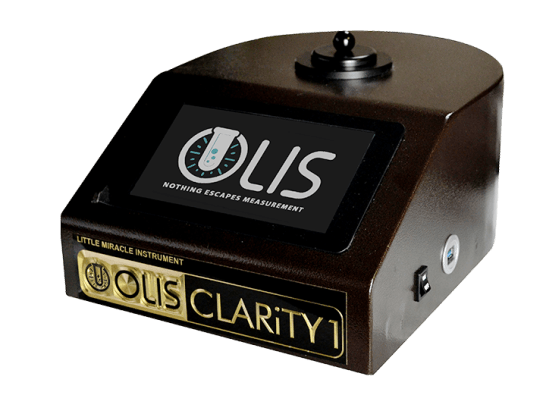The 20-Second Trick For Uv/vis/nir
The 20-Second Trick For Uv/vis/nir
Blog Article
Circular Dichroism - The Facts
Table of ContentsIndicators on Circularly Polarized Luminescence You Need To KnowCircular Dichroism for BeginnersCircular Dichroism - An OverviewThe Ultimate Guide To Uv/vis/nirSome Ideas on Uv/vis/nir You Need To Know

Although spectrophotometry is most frequently applied to ultraviolet, visible, and infrared radiation, modern-day spectrophotometers can interrogate wide swaths of the electromagnetic spectrum, consisting of x-ray, ultraviolet, noticeable, infrared, and/or microwave wavelengths. Spectrophotometry is a tool that hinges on the quantitative analysis of molecules depending on how much light is taken in by colored compounds.
Some Known Questions About Spectrophotometers.
A spectrophotometer is commonly used for the measurement of transmittance or reflectance of solutions, transparent or opaque solids, such as sleek glass, or gases. Although lots of biochemicals are colored, as in, they absorb noticeable light and for that reason can be measured by colorimetric treatments, even colorless biochemicals can often be transformed to colored substances suitable for chromogenic color-forming reactions to yield compounds suitable for colorimetric analysis.: 65 However, they can also be designed to measure the diffusivity on any of the noted light ranges that normally cover around 2002500 nm using different controls and calibrations.
An example of an experiment in which spectrophotometry is utilized is the decision of the equilibrium constant of an option. A particular chain reaction within a solution may take place in a forward and reverse instructions, where reactants form products and products break down into reactants. At some time, this chain reaction will reach a point of balance called an equilibrium point.
Fascination About Spectrophotometers
The amount of light that goes through the solution is indicative of the concentration of particular chemicals that do not permit light to go through. The absorption of light is because of the interaction of light with the electronic and vibrational modes of molecules. Each type of molecule has a specific set of energy levels associated with the makeup of its chemical bonds and nuclei and therefore will soak up light of particular wavelengths, or energies, leading to distinct spectral residential or commercial properties.
Making use of spectrophotometers covers numerous scientific fields, such as physics, products science, chemistry, biochemistry. UV/Vis, chemical engineering, and molecular biology. They are widely utilized in many markets consisting of semiconductors, laser and optical production, printing and forensic evaluation, as well as in labs for the study of chemical substances. Spectrophotometry is frequently used in measurements of enzyme activities, decisions of protein concentrations, determinations of enzymatic kinetic constants, and measurements of ligand binding reactions.: 65 Eventually, a spectrophotometer is able to determine, depending upon the control or calibration, what substances exist in a target and exactly how much through calculations of observed wavelengths.
This would come as a solution to the previously created spectrophotometers which were not able to take in the ultraviolet properly.
Not known Details About Uv/vis
It would be found that this did not give satisfactory outcomes, for that reason in Model B, there was a shift from a glass to a quartz prism which enabled for better absorbance outcomes - circularly polarized luminescence (https://www.brownbook.net/business/52441542/olis-clarity/). From there, Model C was born with an adjustment to the wavelength resolution which ended up having three systems of it produced
It irradiates the sample with polychromatic light which the sample takes in depending upon its properties. Then it is transferred back by grating the photodiode variety which identifies the wavelength area of the spectrum. Since then, the development and application of spectrophotometry gadgets has increased immensely and has actually become one of the most innovative instruments of our time.

Getting The Circularly Polarized Luminescence To Work
Historically, spectrophotometers utilize a monochromator consisting of a diffraction grating to produce the analytical spectrum. The grating can either be movable or repaired. If a single detector, such as a photomultiplier tube or photodiode is used, the grating can be scanned step-by-step (scanning spectrophotometer) so that the detector can measure the light intensity at each wavelength (which will represent each "step").
In such systems, the grating is repaired and the strength of each wavelength of light is measured by a various detector in the variety. When making transmission measurements, the spectrophotometer quantitatively compares the fraction of light that passes through a referral solution and a test solution, then digitally compares the intensities of the two signals helpful hints and calculates the portion of transmission of the sample compared to the referral standard.

Report this page